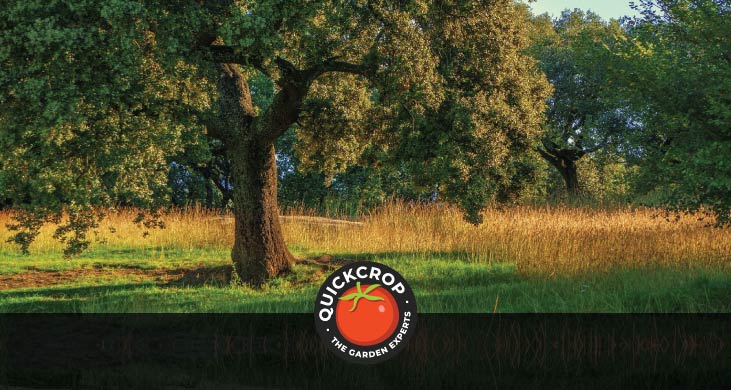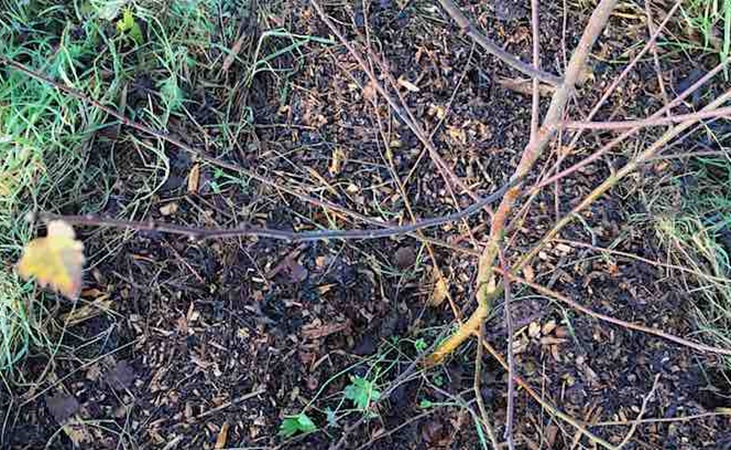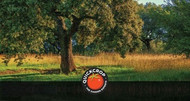A Guide To Planting Bare Root Trees

As regular readers will know, I had to take down over half of my trees due to ash die back disease. Sadly, that has left my little patch of land looking very different and in need of some repair. I must draw a little map one of the days to show the layout of my garden but basically my three acres consists of a rectangular field with a house at one end.
The field is almost entirely bordered by ash trees (at least it was), with relatively open land around, so the loss of my mature specimens has left the place looking a bit bare. As the old saying goes; 'the best time to plant a tree is 20 years ago, the second best time is now' so, last weekend, I made my first efforts to tip the woody balance back to where it should be.

The plan is to plant more trees than were there in the first place and to fill in some of the space rather than having a single line of trees around the edge.
The land is almost all deep, black peat with pretty reasonable grass growing on it so, while I will be restricted by its acidity, it is good enough for what I intend to grow. As dictated by a naturally occurring birch wood behind my house, my land would likely end up similarly covered so these fast growing trees will form the bones of my new garden.
I will be trying to imitate the existing wood (including underplanting with ferns, heather and moor grasses) but will also be making some additions, including swathes of acid-tolerant wildflowers and whatever else suggests itself as the planting comes together.

You can see above that I got started last weekend and have quite a few trees in already, moving in from a drainage ditch to an area that I had been cutting as lawn. When I first moved here, this field was grazed by cattle too heavy for it: leaving it poached, puddled and looking very sorry for itself. It was also, as is typical of my area, full of rushes so it never really suggested itself as a garden.
The reason for cutting it as grass was to annoy the rushes, as they won't survive constantly being cut short. This worked a treat after a few years of mowing, but I have always been well aware that large lawns are essentially green wildlife deserts so it is high time that I stopped.

Bare Root Trees
If you would like to plant some trees in your own garden you can do so relatively cheaply by using bare root tree saplings. Bare root plants are planted in Winter when the trees are dormant and, when sourced as small saplings or 'whips', they do not need to be staked so are quick and easy to plant.
In general the smaller the tree is when it is planted the better tree it will produce. Buying large trees for planting schemes is really for instant effect and does not produce the best quality tree in the long run.

Worms
Here's an interesting one: you can just about see on the right side of the photo the line between a strip of ground that I cut sporadically (because it didn't have any rushes) and a greener area which was cut nearly every week. When I was digging the holes for the trees, the area on the left had very few earthworms in it while the lawn side was absolutely full of them.
The reason, I presume, is that I had been providing a weekly meal for the worms. I use a mulching mower which spreads rather than collects the clippings which become an evenly spread worm food. The worms have also improved the drainage and consistency of the soil; this was immediately obvious when digging the planting holes, as the wormy part was reasonably crumbly while the margins were dense and sticky.

Wood mulch
Before someone says "That's not a birch tree!", I am going for a mixed woodland which includes both silver and downy birch, mountain ash (rowan) and, as shown above, holly. I will also be trying some crab apples for pollinators as well as a couple of larch, field maple, Scott's pine and oak on the higher side of the field which has a very different soil type.
The stuff in the box on the back of the tractor is the mulched extremities of the ash trees I took down (the rest is chopped as logs); they will be doing their bit for the new trees, as they are providing a weed-blocking mulch as well as slow-release nutrients as they break down.

The birch trees I have put in are mostly 60cm tall whips which might seem very small but they take off very quickly. I have birch elsewhere in my field that I put in 4 or 5 years ago, some as 8ft young trees and others as whips and they are now all more or less the same height.
The other advantage of planting whips is that you don't need to use a stake because the root is in balance with the height of the young sapling. Stock that is transplanted at the juvenile stage will inevitably have lost most of it's anchoring root mass when dug up so may not be able to support it's canopy. A whip also offers very little wind resistance and will bend rather than rock so is less likely to pull on its roots.

It might look in the photos like I have dug a big 1m diameter hole for my little saplings but the trees themselves are planted using the notch technique. Notch planting is very quick and easy needing only an opened out 'T' shape slit to plant the tree. This method is only suitable for whips (another advantage of planting small) but means you can get a large number of trees in the ground in an afternoon.

Westland Fish, Blood & Bone Meal
View ProductThe only addition I made to the above was to add a sprinkle of blood, fish and bone fertiliser in and around the planting hole to promote root growth. Blood, fish and bone is high in root building phosphorous so very good for planting bare root whether trees, hedging or fruit plants.

The circular area around the sapling has been cleared of any deep root weeds and covered with plenty of mulch to prevent any weed seeds germinating. I also dug a shallow channel around the perimeter to keep the mulch in place and to be able to run the lawnmower over the edge. I have gone to all this trouble as a tree will establish much quicker without any weed competition and it'll keep things reasonably tidy until I figure out what to do next.

As I said, as well as the trees and shrubby heathers, I want to include plenty of wildflowers to transition from my woody area out into the grass. I am always inspired by my local bog walk which shows off more colour than you might think including the purple/blue of Devil's bit scabious (above) which flowers from July through to October.
